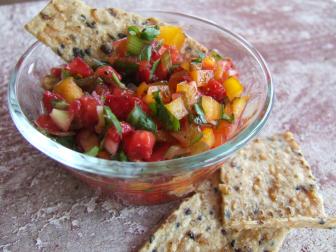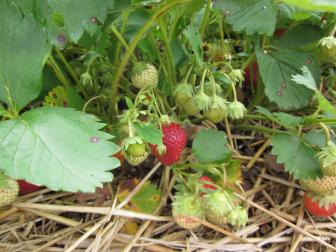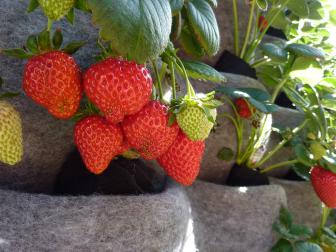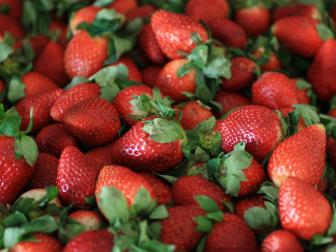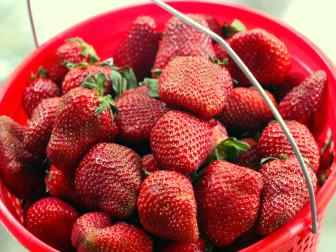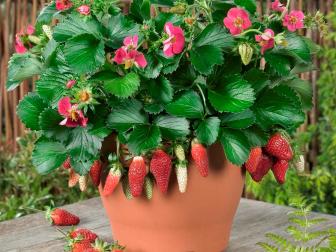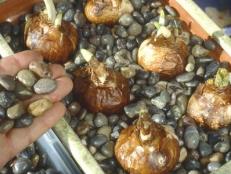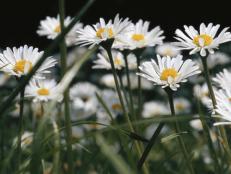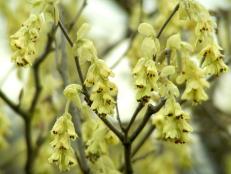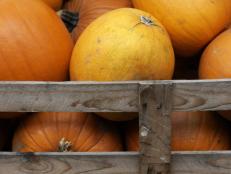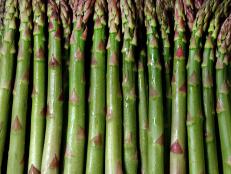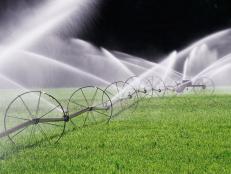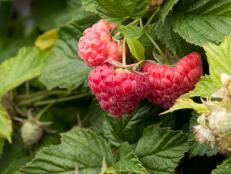How to Grow Strawberries
Here’s what you need to know to plant strawberries and grow summer’s juiciest, sweetest fruit.

Nothing says summer like biting into a strawberry still warm from the summer sun in your garden. But, if you want strawberries that taste like Mother Nature intended, you'll need to grow strawberries yourself.
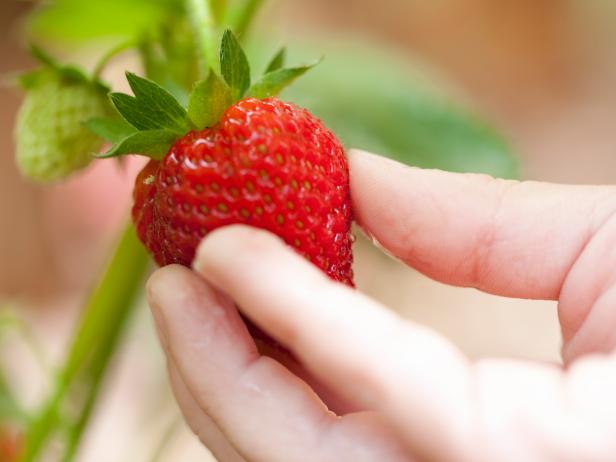
Homegrown strawberries are a million times better than store-bought ones. That's because the sugar in the berries begins to turn into starch the moment it's picked. By the time a berry grown on a commercial farm makes its way to the produce bin at your local supermarket, most of its sweetness is gone.
The good news is they're easy to grow if you give them what they need: full sun and consistent moisture. Plant a few rows of strawberries and you'll have enough to fill your dinner plate and your freezer. Here's how to plant, grow and harvest strawberries in your garden.
Strawberries 101
Strawberries have been around since ancient times when the Romans believed they had medicinal value. But the garden strawberries we eat today are hybrids of strawberries native to Europe and the Americas. They were created in France by plant breeders in the early 1700s and first cultivated in the United States in the late 1700s. Modern strawberries come in three basic types:
June bearing varieties produce one crop of berries, usually over a three-week period. Although they're called "June bearing," these strawberries will produce fruit earlier than that in warmer climates. They produce the biggest crop overall, even though they make berries just once a year. These are a good choice for places with a short growing season, but keep in mind you'll be eating or canning a lot of berries in one burst.
Everbearing varieties produce two crops a year, one in the spring and a second in later summer to early fall. These are a good choice if you want to spread your fresh berries out over two harvests.
Day-Neutral varieties produce a continual but smaller crop of berries through the growing season until first frost.
Botanical Name: Fragaria spp.
Common Names: Strawberry
Hardiness Zones: 4 to 10
Planting Strawberries
You'll have the most success with starter plants from a nursery. Pass-along plants from a friend's garden may be free, but strawberry plants decrease in vigor after a few years and become less productive and susceptible to disease, so hand-me-down plants are not the best idea.
Pick a spot that gets full sun, between six and 10 hours of direct sunlight each day. Raised beds are a great option for strawberry plants.
Strawberry plants do best in moist, well-drained soil. Turn over the soil in the planting bed with a shovel to loosen it and mix in an organic material like compost or composted manure to add nutrients. Soil pH should be between 5.5 and 7.
Plant berries in early spring in rows 4 feet apart, spacing the plants 2 feet apart. The mother plants will make runners that fill the rows. The runners don't make fruit. Leave them on June bearers, but clip them off of everbearing and day-neutral varieties of strawberries.
Do not bury the crown of the plant. That's the central growing bud of the plant, where the fruit and leaves will be produced. Cover it with dirt, and it will rot.
Water plants well when you put them in the ground.
Can strawberries be planted in the fall? Strawberries are best planted in the spring, and for that reason most nurseries carry them only at that time. You can start preparing the strawberry bed this fall, however, by removing weeds and sod. Then add organic matter, such as rotted manure or compost, to the planting area. Cover with black plastic until planting time in the spring to eliminate weed growth so your newly planted strawberries will get off to the best possible start.
Caring for Strawberries
Mulch the beds to keep weeds down and reduce the amount of watering you have to do.
Weed, weed, weed. Pull them out by hand in the first months after planting so they don't take compete with your berry plants for nutrients.
Water regularly, about 1 inch per week. Strawberry plants have shallow roots, and they need a lot of water when they are flowering and fruiting.
Fertilize at the time of planting, at the time of bloom, and again after you harvest berries.
In the first year of your plant's life, pluck off the blooms to keep plants from fruiting. Yes, this is hard to do, because you want fruit this year. But if you give your plants a year to get strong and develop healthy roots, you'll get a much bigger crop of berries the second year.
Clip out the daughter plants as needed. First and second-generation plants produce bigger crops.
Our Fave Strawberry Recipes
Winter care: Strawberry plants are perennial and naturally cold hardy so they'll survive a mild winter. If you have harsh winters, clip off the foliage after the first frost and mulch the plants with 4 inches of straw, pine needles or other organic material. Remove the mulch in the spring.
Winterizing Strawberry Plants
Learn how to protect your strawberry plants for winter, including tips for dealing with plants in jars, barrels and pyramids.
How to Grow Strawberries in a Pot
Strawberries have small root systems so they can be grown in a container. You'll need to water a pot of strawberries a lot, so consider drip irrigation to keep you from being a garden-hose-wielding slave to your strawberries. Day-neutral and everbearing varieties are the best choice for containers because they produce fewer runners. Either grow them as annuals or plan on storing the pot of strawberry plants in an unheated shed or garage once they go dormant.
Creative Strawberry Planter Ideas 22 Photos
Learn about different types of stylish containers you can use for growing strawberries.
How to Harvest Strawberries
- Fruit is typically ready to be picked 4 to 6 weeks after the plants blossom.
- Pick only the fully red berries and pick every three days.
- Cut the stem with a pair of clippers. Do not pull the berry or you can damage the plant.
- For June bearing varieties, your harvest will last up to three weeks.
Preserving Your Strawberry Harvest
Pests and Problems
Birds love strawberries and may eat them before you can pick them. Cover your beds with bird netting or row covers to protect your crop. Gray mold, powdery mildew, Japanese beetles, spider mites and slugs all attack strawberries. Spray insects with a neem oil and water mixture, and mold or mildews with organic fungicides — lime-sulfur, neem oil, or potassium bicarbonate.
Recommended Strawberry Varieties
June-Bearing Types
'Allstar' makes extra-large, extra-sweet berries in late spring to early summer. It's hardy, disease-resistant and the best choice for a home garden.
'Sequoia' is another great choice for home gardens. While it's officially a June bearer, 'Sequoia' will produce berries all summer in mild climates.
Everbearing Types
'Ozark Beauty' produces mild fruit with a high sugar content so it's good for making jams and jellies. This one is very cold tolerant, able to tolerate temps as cold as minus 30. You can grow this one in Alaska.
'Quinault' is the most popular variety of everbearing strawberry. It produces large, extra sweet berries that are good for preserves or eating fresh.
Day-Neutral Types
'Tristar' is a darling of chefs and produces large berries that are good for eating fresh, preserving or freezing.
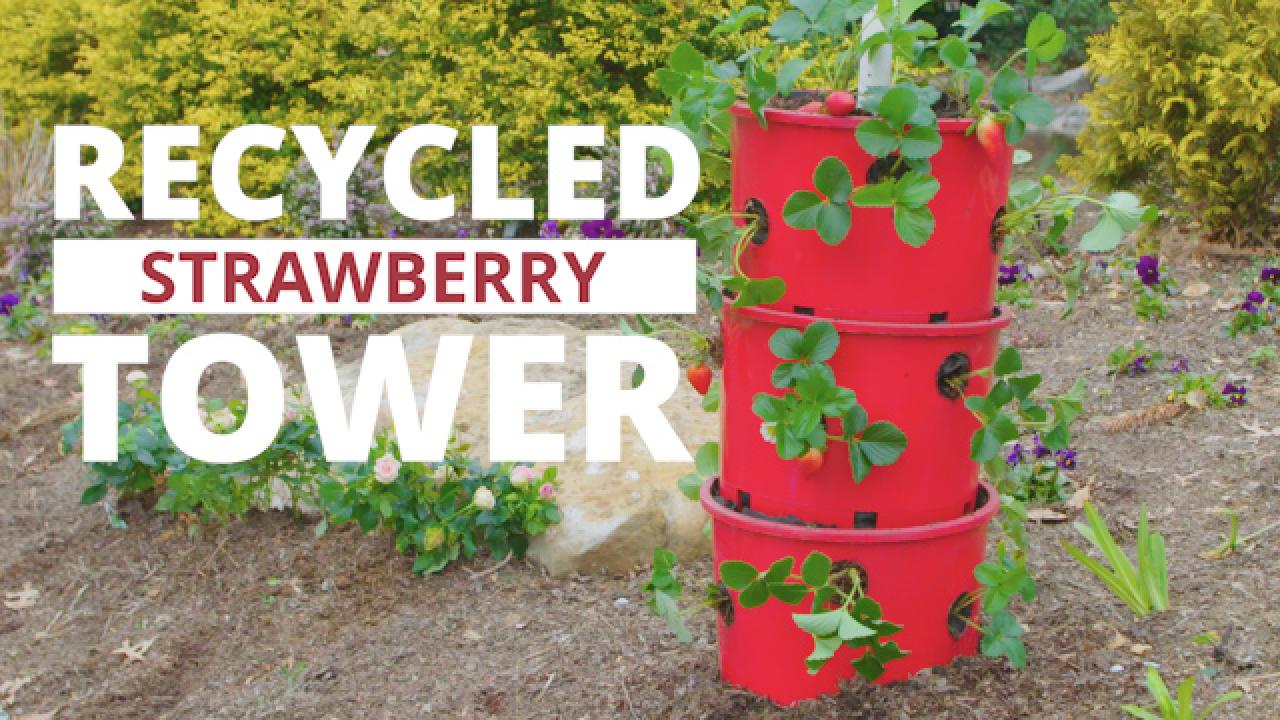
Popular Strawberries to Grow 7 Photos
Growing strawberries? Try these sweet varieties.
Strawberry Recipes from Food Network
Get Food Network's best strawberry recipes — from cocktails to cheesecakes.







